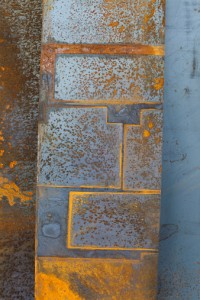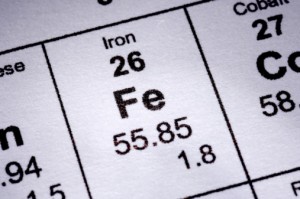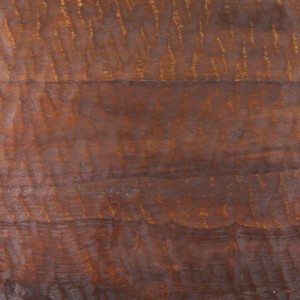The Temple of Torah and Science
By Nir Menussi: March 18, 2011: Category Inspirations, Networks of Meaning
Integrating Science and Mysticism, Article 10
 We have been exploring the idea of resurrecting the old notion that science should be the handmaid of religion, albeit in a radically new way that doesn’t constrain science but honors and elevates it. For this sake, we introduced the Chassidic notion that a rectified mistress-handmaid relationship contains a positive version of the verse “a handmaid that is heir to her mistress”: the mistress in it is respectful of the fact that her handmaid is privy to a certain kind of knowledge she herself is unable to obtain—i.e. practical knowledge accumulated from the ground up (as opposed to more theoretical or spiritual knowledge handed down from ‘above’)—and so, while remaining the mistress, she humbly learns from her handmaid. This relationship, we claimed, should serve as a model for Torah and science.
We have been exploring the idea of resurrecting the old notion that science should be the handmaid of religion, albeit in a radically new way that doesn’t constrain science but honors and elevates it. For this sake, we introduced the Chassidic notion that a rectified mistress-handmaid relationship contains a positive version of the verse “a handmaid that is heir to her mistress”: the mistress in it is respectful of the fact that her handmaid is privy to a certain kind of knowledge she herself is unable to obtain—i.e. practical knowledge accumulated from the ground up (as opposed to more theoretical or spiritual knowledge handed down from ‘above’)—and so, while remaining the mistress, she humbly learns from her handmaid. This relationship, we claimed, should serve as a model for Torah and science.
We now wish to delve a little more deeply into this vision, by exploring some of its wider context within Jewish mysticism.
A Futuristic Temple
In Kabbalah, the idea of the mistress inheriting her handmaid is associated with the Hebrew word barzel (ברזל), which means iron. The reason for this is that the four letters making up this word—B (beit) R (reish) Z (zayin) L (lamed)—form the acronym of four very well-known women in the Bible, two mistresses and two handmaids: Leah and Rachel, Jacob’s two wives, and their respective handmaids Bilha and Zilpa. The reason this word connotes specifically the idea of the handmaid inheriting her mistress is that it places the handmaids before their mistresses (and even the younger sister before the elder one): first Bilha, then her mistress Rachel, then Zilpa, and finally the elder mistress Leah: BRZL.
In Torah, when we want to fully understand a certain term, we must examine its entire ‘semantic field’ – its interconnected web of stories and phrases in various Torah texts. When we do this to the term barzel, ‘iron’, we stumble upon a very interesting idea. It turns out that it was forbidden to include iron in the construction of the Tabernacle and the first and second Temples. The reasons stated for this are that iron symbolizes death and destruction, the very opposites of what the Temple stands for. Iron is also associated with the Roman Empire—likened in the Bible to an “iron beast”—which was destined to destroy the second Temple.
 The fact that iron symbolizes the idea of the handmaid inheriting her mistress adds an additional dimension to this image: that the first two Temples, it teaches us, were founded on a solid, traditional hierarchy, both metaphysical and social, and wanted nothing to do with a hierarchy-shattering element.
The fact that iron symbolizes the idea of the handmaid inheriting her mistress adds an additional dimension to this image: that the first two Temples, it teaches us, were founded on a solid, traditional hierarchy, both metaphysical and social, and wanted nothing to do with a hierarchy-shattering element.
However, it is explained in Chassidism that the third Temple—destined to be built in the Messianic Era and to stand forever—will contain iron. It is to be an integral and fundamental part of it, embedded within its very infrastructure. In fact, it is explained that it is precisely this harsh and ‘foreign’ element that will endow the third Temple with its everlastingness. It is as if, after having battled and won over the iron beast, the Temple will have internalized its properties and become immune to any further attacks from it.
The vision of a positive and even holy use for the usually-shunned iron echoes the idea of a positive kind of a mistress-inheriting handmaid. It suggests that the third Temple symbolizes a future Judaism which is open and willing to learn from the “wisdom of the nations”, and furthermore, to accept this wisdom as part and parcel of the Divine hall of truth. It stands for a flexible and multi-layered Judaism that balances its traditional hierarchies with opposite, complementary hierarchies, in which Torah not only teaches but learns, in which nature is itself a book of Torah, and its students – Torah scholars.
Rectifying Science’s Rebellion
The idea of a positive inheritance of mistress by handmaid, a positive barzel, is very deep indeed. It means that science’s rebellion against religion need not be answered either by totally surrendering to it or by subduing it with force. In cases like this, Chasidism’s view is always that there is a third path, the path of tikun, rectification. Rectifying something means extracting the element of truth in it from its false context (in Chasidic terminology, the holy ‘spark’ from the impure ‘shell’), and then finding a positive and constructive way to actualize that element. A rectifying middle path doesn’t simply avoid the two extremes but finds a way to combine their strengths.
How does the vision of the iron Temple, the positive barzel, rectify science’s rebellion? The rebellion began because science was subjugated and degraded by a truly unworthy mistress, namely Medieval Catholicism. Its rebellion was therefore a just one—that’s the element of truth in it. But this just cause quickly took on a negative form, as science spawned a culture which isn’t just looking for intellectual freedom, but wants to wreak vengeance on the religion that once subjugated it, as well as anything resembling it. That is the negative barzel, in which the precedence of handmaids to mistresses symbolizes science’s wish to usurp religion and drag it, so to speak, to the guillotine. The image of the iron beast destroying the Temple is a metaphor for science’s cynical mockery of all faiths, of using science as weapon to disgrace and erase religion.
 So here we have our two extremes: an iron-less Temple (science-less, even anti-scientific, religion) on the one hand, and an iron beast (cynical, anti-religious science) on the other. Their rectification is the iron Temple—a Torah religion which not only includes science, but includes its rebelliousness as well. In the positive barzel the handmaids again precede the mistresses, but in a different sense altogether: this time they’re not attacking the Torah world; they’re challenging it. They’re banging on its doors, waking it up, urging it to shed light on their discoveries. The iron Temple does not suppress science’s rebelliousness, nor does it applaud it; it transforms it into a positive chutzpa, the desirable brashness of the pupil who throws challenges at his teacher—so that he would learn more from him.
So here we have our two extremes: an iron-less Temple (science-less, even anti-scientific, religion) on the one hand, and an iron beast (cynical, anti-religious science) on the other. Their rectification is the iron Temple—a Torah religion which not only includes science, but includes its rebelliousness as well. In the positive barzel the handmaids again precede the mistresses, but in a different sense altogether: this time they’re not attacking the Torah world; they’re challenging it. They’re banging on its doors, waking it up, urging it to shed light on their discoveries. The iron Temple does not suppress science’s rebelliousness, nor does it applaud it; it transforms it into a positive chutzpa, the desirable brashness of the pupil who throws challenges at his teacher—so that he would learn more from him.
http://www.interinclusion.org/inspirations/lessons-of-the-handmaids/
The Temple of Torah and Science ,






















;)
;)
;)
;)
;)
;)
;)
;)
;)
;)
